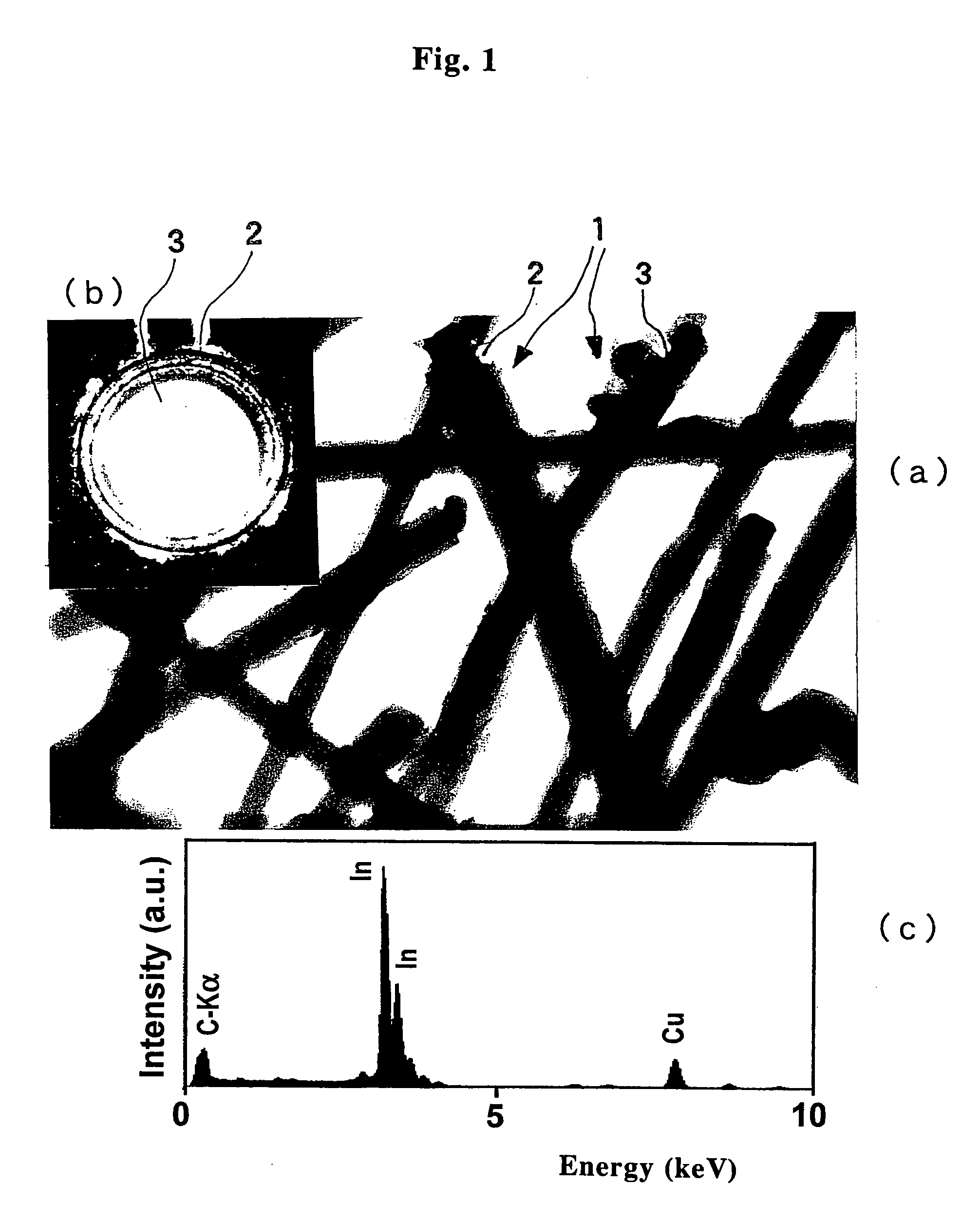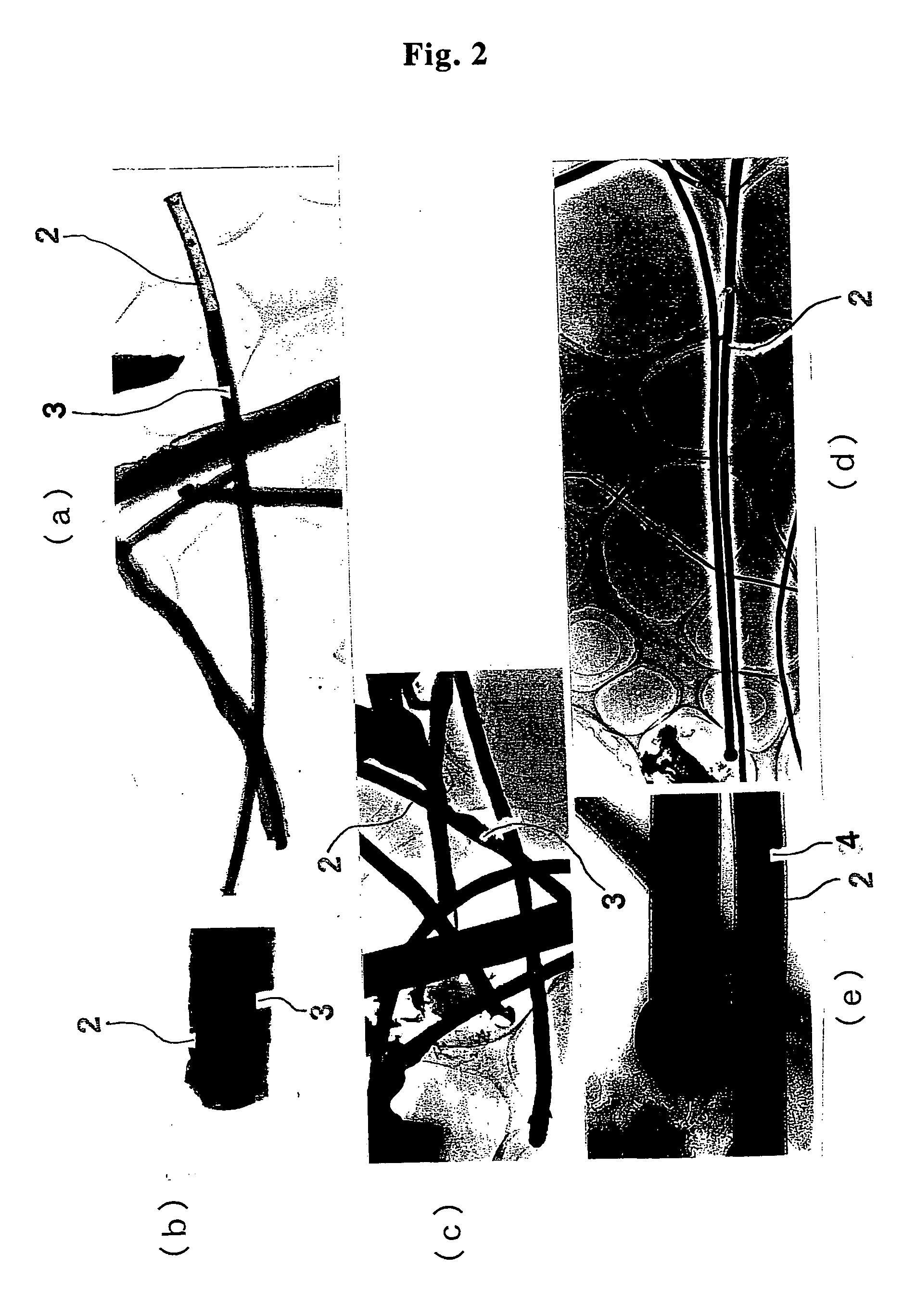Temperature-sensing element and method of manufacturing the element, and nanothermometer
a temperature-sensitive element and nano-thermometer technology, applied in the field of temperature-sensitive elements, can solve the problems of labor and cost, and the high-precision nanothermometer of environments having a micrometer size has not been found out,
- Summary
- Abstract
- Description
- Claims
- Application Information
AI Technical Summary
Benefits of technology
Problems solved by technology
Method used
Image
Examples
example 1
[0054] First, a temperature sensitive element comprises a carbon nanotube in which indium was included was produced using a vertical high frequency induction heating furnace. This vertical high frequency induction heating furnace was made of a transparent quartz glass tube of 50 cm length, 12 cm diameter and 0.25 cm thickness. A cylinder made of high-purity graphite was fitted into this quartz glass tube. This cylinder had a length of 7 cm, an outer diameter of 4.5 cm and an inner diameter of 3.5 cm. A gas introducing pipe and a gas exhaust pipe were set to the bottom and the top of this cylinder, respectively. Furthermore, a crucible made of graphite and having a diameter of 2 cm and a height of 2 cm was set inside this cylinder.
[0055] A uniform mixture of indium oxide powder and amorphous activated carbon powder, the weight ratio therebetween being at 11.6:1, was put into this crucible and then high-purity nitrogen gas flow was introduced into the heating surface. The mixture was...
PUM
 Login to View More
Login to View More Abstract
Description
Claims
Application Information
 Login to View More
Login to View More - R&D
- Intellectual Property
- Life Sciences
- Materials
- Tech Scout
- Unparalleled Data Quality
- Higher Quality Content
- 60% Fewer Hallucinations
Browse by: Latest US Patents, China's latest patents, Technical Efficacy Thesaurus, Application Domain, Technology Topic, Popular Technical Reports.
© 2025 PatSnap. All rights reserved.Legal|Privacy policy|Modern Slavery Act Transparency Statement|Sitemap|About US| Contact US: help@patsnap.com



